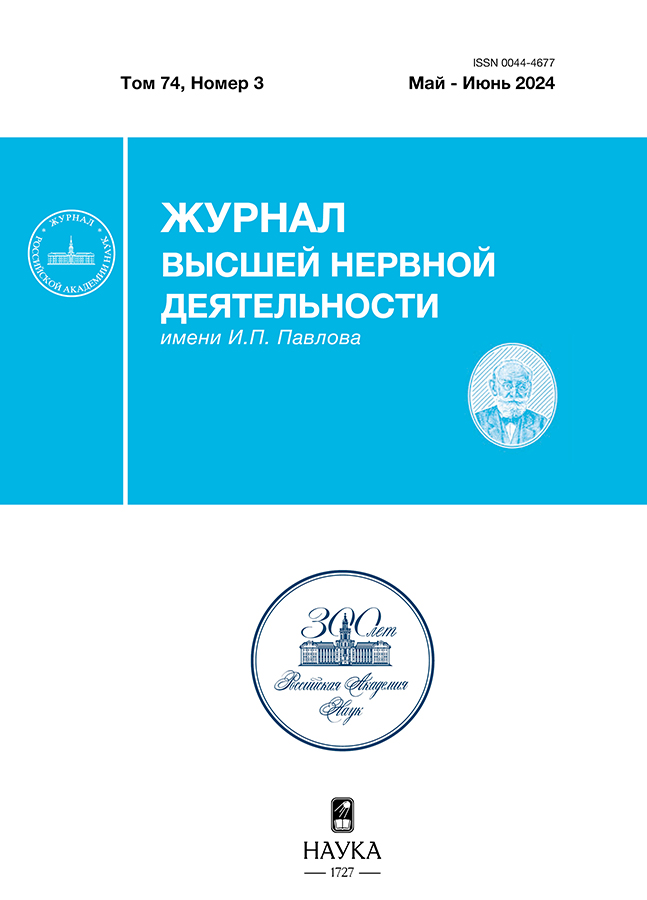AVRawRA – application for video raw record acquisition for neuroimaging and videoregistration research
- Авторлар: Suchkov D.S.1, Shumkova V.V.2, Sitdikova V.R.2, Silaeva V.M.2, Logashkin A.E.2, Mamleev A.R.2, Popova Y.V.2, Sharipzyanova L.S.2, Minlebaev M.G.1,2
-
Мекемелер:
- INSERM UMR1249, INMED, Aix-Marseille University
- Kazan Federal University
- Шығарылым: Том 74, № 3 (2024)
- Беттер: 369-382
- Бөлім: МЕТОДИКА
- URL: https://cardiosomatics.orscience.ru/0044-4677/article/view/652094
- DOI: https://doi.org/10.31857/S0044467724030094
- ID: 652094
Дәйексөз келтіру
Аннотация
Application for Video Raw Record Acquisition – AVRawRA [ɔːvˈrɔːrə], is a software designed for acquisition and recording video from the cameras into raw binary and compressed video formats. AVRawRA allows using a wide range of camera devices in various neuroimaging applications. That provides the benefit of usage of expensive video registration equipment for several tasks with single software. The concept of presented software allows adding any camera device without rebuilding of the main code pipeline. Presented software has a user-friendly interface with interactive elements for regulating parameters of acquisition and recording in real time, without stopping video stream. Simultaneous real-time visualization, analysis and recording can be performed without loss of the efficiency and missed frames. AVRawRA supports recordings from camera devices with both external and internal triggers. The size of the saved video file is not restricted by the recording time and is limited only by the space on the storage. Our software is perfectly suited both for the neuroimaging applications and experiments with supplementary videoregistration. To summarize, AVRawRA represents a universal platform for usage of various videoregistration devices, performing real-time analysis and high-speed recordings in raw and compressed video formats.
Негізгі сөздер
Толық мәтін
Авторлар туралы
D. Suchkov
INSERM UMR1249, INMED, Aix-Marseille University
Хат алмасуға жауапты Автор.
Email: suchkov.dmitriy.ksu@gmail.com
Франция, Marseille
V. Shumkova
Kazan Federal University
Email: suchkov.dmitriy.ksu@gmail.com
Ресей, Kazan
V. Sitdikova
Kazan Federal University
Email: suchkov.dmitriy.ksu@gmail.com
Ресей, Kazan
V. Silaeva
Kazan Federal University
Email: suchkov.dmitriy.ksu@gmail.com
Ресей, Kazan
A. Logashkin
Kazan Federal University
Email: suchkov.dmitriy.ksu@gmail.com
Ресей, Kazan
A. Mamleev
Kazan Federal University
Email: suchkov.dmitriy.ksu@gmail.com
Ресей, Kazan
Y. Popova
Kazan Federal University
Email: suchkov.dmitriy.ksu@gmail.com
Ресей, Kazan
L. Sharipzyanova
Kazan Federal University
Email: suchkov.dmitriy.ksu@gmail.com
Ресей, Kazan
M. Minlebaev
INSERM UMR1249, INMED, Aix-Marseille University; Kazan Federal University
Email: suchkov.dmitriy.ksu@gmail.com
Франция, Marseille; Kazan, Россия
Әдебиет тізімі
- Aitken P.G., Fayuk D., Somjen G.G., Turner D.A. Use of intrinsic optical signals to monitor physiological changes in brain tissue slices. Methods 1999. 18: 91–103. https://doi.org/10.1006/meth.1999.0762
- Akhmetshina D., Nasretdinov A., Zakharov A., Valeeva G. The Nature of the Sensory Input to the Neonatal Rat Barrel Cortex. The Journal of Neuroscience 2016. 36 (38): 9922–9932. https://doi.org/10.1523/jneurosci.1781–16.2016
- Baker B.J., Kosmidis E.K., Vucinic D., Falk C.X., Cohen L.B., Djurisic M., Zecevic D. Imaging brain activity with voltage- and calcium-sensitive dyes. Cellular and Molecular Neurobiology 2005. 25 (2): 245–282. https://doi.org/10.1007/s10571–005–3059–6
- Dard R., Leprince E., Denis J., Rao Balappa S., Suchkov D., Boyce R. et al. The rapid developmental rise of somatic inhibition disengages hippocampal dynamics from self-motion. eLife 2022. 11:e78116. https://doi.org/10.7554/eLife.78116
- Grinvald A., Hildesheim R. VSDI: a new era in functional imaging of cortical dynamics. Nature Reviews . Neuroscience 2004. 5 (11): 874–885. https://doi.org/10.1038/nrn1536
- Hendel T., Mank M., Schnell B., Griesbeck O., Borst A., Reiff D.F. Fluorescence changes of genetic calcium indicators and OGB-1 correlated with neural activity and calcium in vivo and in vitro. The Journal of Neuroscience 2008. 28 (29): 7399–7411. https://doi.org/10.1523/JNEUROSCI.1038–08.2008
- Hubel D.H., Wiesel T.N. Receptive fields, binocular interaction and functional architecture in the cat’s visual cortex. Journal of Physiology 1962. 160: pp. 106–154. https://doi.org/10.1615/CritRevBiomedEng.2017020607
- Inácio A.R., Nasretdinov A., Lebedeva J., Khazipov R. Sensory feedback synchronizes motor and sensory neuronal networks in the neonatal rat spinal cord. Nature Communications 2016. 7:13060. https://doi.org/10.1038/ncomms13060.
- de Melo Reis R.A., Freitas H.R., de Mello F.G. Cell Calcium Imaging as a Reliable Method to Study Neuron–Glial Circuits. Frontiers in Neuroscience 2020. 14: 975. https://doi.org/10.3389/fnins.2020.569361
- Mues M., Bartholomäus I., Thestrup .T, .Griesbeck O., Wekerle H., Kawakami N., Krishnamoorthy G. Real-time in vivo analysis of T cell activation in the central nervous system using a genetically encoded calcium indicator. Nature Medicine 2013. 19 (6): 778–783. https://doi.org/10.1038/nm.3180
- Oh. J., Lee C., Kaang B.K. Imaging and analysis of genetically encoded calcium indicators linking neural circuits and behaviors. The Korean journal of physiology & pharmacology: official journal of the Korean Physiological Society and the Korean Society of Pharmacology 2019. 23 (4): 237–249. https://doi.org/10.4196/kjpp.2019.23.4.237
- Petersen C.C., Sakmann B. Functionally independent columns of rat somatosensory barrel cortex revealed with voltage-sensitive dye imaging. The Journal of Neuroscience 2001. 21 (21): 8435–8446. 10.1523/JNEUROSCI.21–21–08435.2001' target='_blank'>https://doi.org/doi: 10.1523/JNEUROSCI.21–21–08435.2001
- Popovic M.A., Carnevale N., Rozsa B., Zecevic D. Electrical behaviour of dendritic spines as revealed by voltage imaging. Nature Communications 2015. 6 (1): 8436. https://doi.org/10.1038/ncomms9436
- Salem G., Krynitsky J., Cubert N., Pu .A., Anfinrud S., Pedersen J. et al. Digital video recorder for Raspberry PI cameras with multi-camera synchronous acquisition. HardwareX 2020. 8:e00160. https://doi.org/10.1016/j.ohx.2020.e00160
- Sintsov M., Suchkov D., Khazipov R., Minlebaev M. Developmental Changes in Sensory-Evoked Optical Intrinsic Signals in the Rat Barrel Cortex. Frontiers in Cellular Neuroscience 2017. 11. https://doi.org/10.3389/fncel.2017.00392
- Suchkov D., Shumkova V., Sitdikova V., Minlebaev M. Simple and efficient 3D-printed superfusion chamber for electrophysiological and neuroimaging recordings in vivo. eNeuro 2022. 9 (5). https://doi.org/10.1523/eNeuro.0305–22.2022
- Tiriac A., Sokoloff G., Blumberg M.S. Myoclonic twitching and sleep-dependent plasticity in the developing sensorimotor system. Current Sleep Medicine Reports 2015. 1: 74–79. https://doi.org/10.1007/s40675–015–0009–9
- Venkatesh M, .Victor S.P. Video Compression based on Visual Perception of Human Eye. IJRASET 2018. 6 (1): 2661–2664. https://doi.org/10.22214/ijraset.2018.1365
- Vincis R., Lagier S., Van De .Ville D., Rodriguez I.,Carleton A. Sensory-evoked intrinsic imaging signals in the olfactory bulb are independent of neurovascular coupling. Cell Reports 2015. 12: 1–13. https://doi.org/10.1016/j.celrep.2015.06.016
Қосымша файлдар














